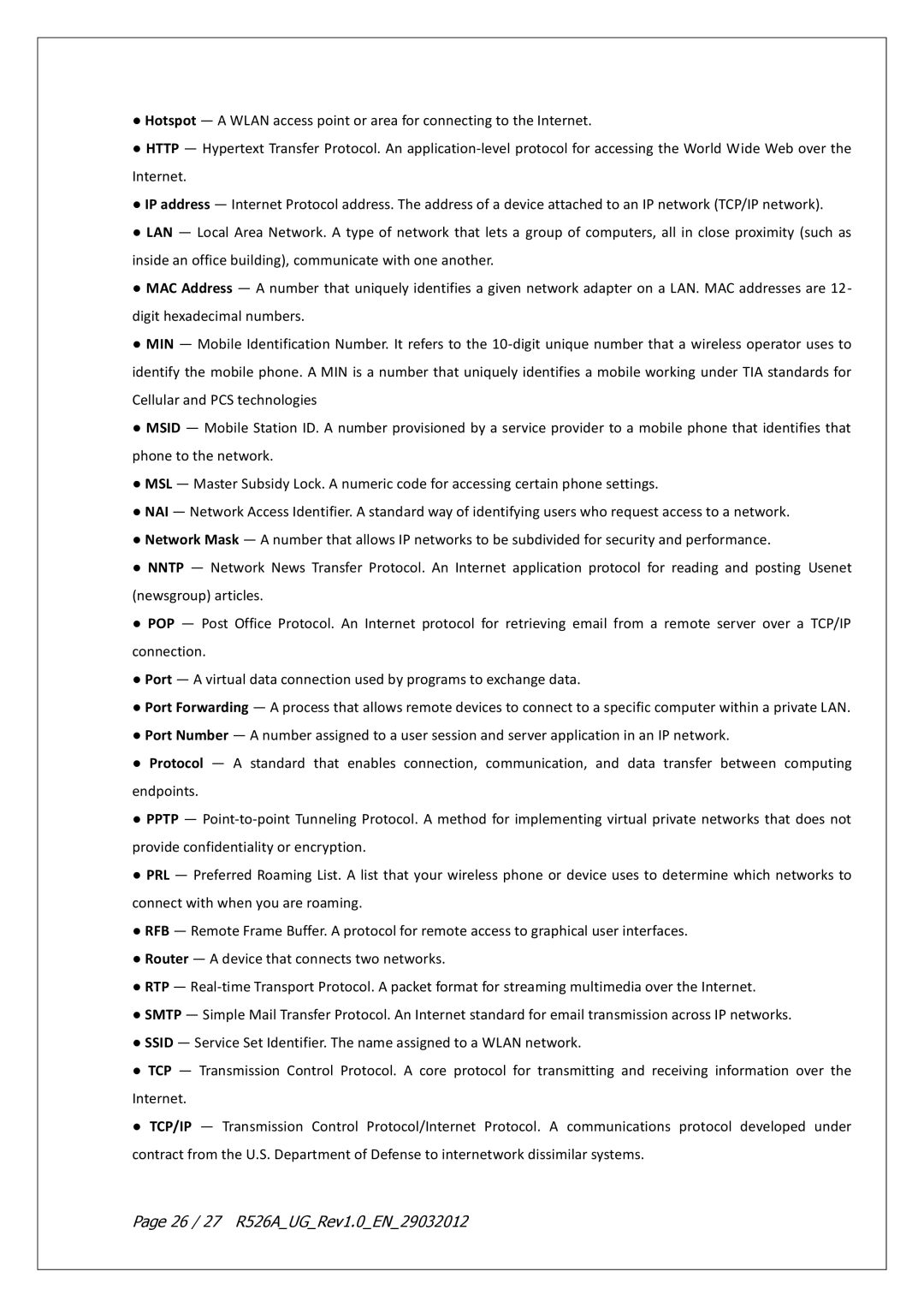
●Hotspot — A WLAN access point or area for connecting to the Internet.
●HTTP — Hypertext Transfer Protocol. An
●IP address — Internet Protocol address. The address of a device attached to an IP network (TCP/IP network).
●LAN — Local Area Network. A type of network that lets a group of computers, all in close proximity (such as inside an office building), communicate with one another.
●MAC Address — A number that uniquely identifies a given network adapter on a LAN. MAC addresses are 12- digit hexadecimal numbers.
●MIN — Mobile Identification Number. It refers to the
●MSID — Mobile Station ID. A number provisioned by a service provider to a mobile phone that identifies that phone to the network.
●MSL — Master Subsidy Lock. A numeric code for accessing certain phone settings.
●NAI — Network Access Identifier. A standard way of identifying users who request access to a network.
●Network Mask — A number that allows IP networks to be subdivided for security and performance.
●NNTP — Network News Transfer Protocol. An Internet application protocol for reading and posting Usenet (newsgroup) articles.
●POP — Post Office Protocol. An Internet protocol for retrieving email from a remote server over a TCP/IP connection.
●Port — A virtual data connection used by programs to exchange data.
●Port Forwarding — A process that allows remote devices to connect to a specific computer within a private LAN.
●Port Number — A number assigned to a user session and server application in an IP network.
●Protocol — A standard that enables connection, communication, and data transfer between computing endpoints.
●PPTP —
●PRL — Preferred Roaming List. A list that your wireless phone or device uses to determine which networks to connect with when you are roaming.
●RFB — Remote Frame Buffer. A protocol for remote access to graphical user interfaces.
●Router — A device that connects two networks.
●RTP —
●SMTP — Simple Mail Transfer Protocol. An Internet standard for email transmission across IP networks.
●SSID — Service Set Identifier. The name assigned to a WLAN network.
●TCP — Transmission Control Protocol. A core protocol for transmitting and receiving information over the Internet.
●TCP/IP — Transmission Control Protocol/Internet Protocol. A communications protocol developed under contract from the U.S. Department of Defense to internetwork dissimilar systems.
